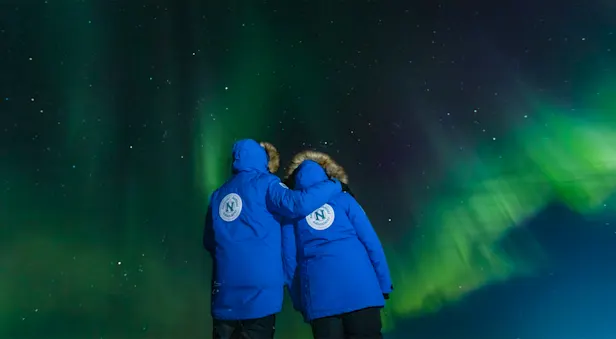
Know Before You Go
All About The Aurora Borealis | Know Before You Go
Aurora borealis translates to “Dawn of the North.” Aurora is the Roman goddess of the dawn, and Boreas is the Greek god of the north wind and the usher of winter.
Description of the Aurora Borealis
The aurora borealis is a radiant display, visible only in the northern night sky. It occurs throughout the entire polar region; however, when viewed from the ground, only a tiny section of the aurora is visible. Although the lights seem to come very close to the earth’s surface, the aurora is actually miles away; at its closest, it is 40 miles from the ground, while at its farthest it can be almost 600 miles above the planet.
As auroral activity increases, folds are created. The breadth and complexity of each fold is determined by the amount of activity generated. The most frequent shape observed in the aurora borealis is an awe-inducing arc of color, stretched in a seemingly endless band hundreds or thousands of miles long, with a narrower width of 0.5–6 miles. Possibly the most sensational auroral display is the substorm. This dramatic event transforms a quiet band into a swirling, eddying current of multicolored light, which expands toward the North Pole from the original position on the band. In minutes, a display of active lights may cover the entire night sky, sometimes lasting up to 20 minutes.
Auroras are frequently designated by their internal structure, either homogeneous or rayed; whether they are active or quiet in motion; their degree of brightness on a scale of I to IV; and their color (auroras of typical green or white hues are classified as Type C, while rare, red auroras are designated as Type A).
Origins of the Aurora Borealis
The aurora borealis occurs through the sun's activity. The sun is comprised of hot gases, and its stormy surface is so hot that its gravity is not able to contain particles in its atmosphere. When the sun’s magnetic field lines connect, magnetic energy transforms into heat and kinetic energy. When energy is released and plasma is accelerated, a storm of electrons is created, called solar wind. These charged particles constantly stream toward other planets at a million miles-per-hour. The more active the sun is, the harder the solar wind blows.
Earth’s magnetosphere partially shields it from the full force of the solar wind, as electrons are deflected by the magnetic sphere. But along the earth’s open field lines, which only occur in the north and south poles, some of these charged particles are captured rather than deflected, streaming toward Earth’s polar regions and creating the aurora borealis.
While journeying down the globe’s open magnetic field lines, the high-energy particles gain momentum and shoot into the atmosphere. These particles collide with nitrogen and oxygen atoms in the planet’s atmosphere and transmit energy to the typically uncharged molecules and atoms. These “excited” atoms are unable to be stabilized, causing the energy to release as tiny bursts of light.
Color of the Aurora Borealis
The color of the aurora depends upon which particular molecules collide with the solar wind particles. Light is produced by billions of molecules and atoms experiencing these electron excitations and releases. The harder the solar wind blows, the more brilliant the aurora borealis will become. This is because there is a larger number of high-energy particles, which cause the atmosphere to glow brighter and sightings to occur more frequently. The most typical and brightest color of the aurora is a blazing yellow-green, which is created by oxygen atoms about 60 miles from the earth’s surface. Oxygen atoms up to 200 miles away give off a rare red color. Blue light is created by ionized nitrogen molecules, while a rippling magenta border is produced by neutral nitrogen molecules.
Sounds of the Aurora Borealis
There is no all-embracing theory that adequately explains the sounds that are occasionally heard during an auroral display. Though never recorded, they have been described for hundreds of years, as slight cracklings or rustlings, with an assortment of whizzes, swooshes, snaps, and pops. The majority of these auditory observations have happened during powerful, long auroral displays that appear right over the viewer's head. Most people observe the northern lights without hearing a sound. Those who believe sounds exist assume they are created when electromagnetic waves are transformed into acoustic waves, in a manner similar to reports of meteorites producing sizzling sounds.
Header Credit: Eric Rock































